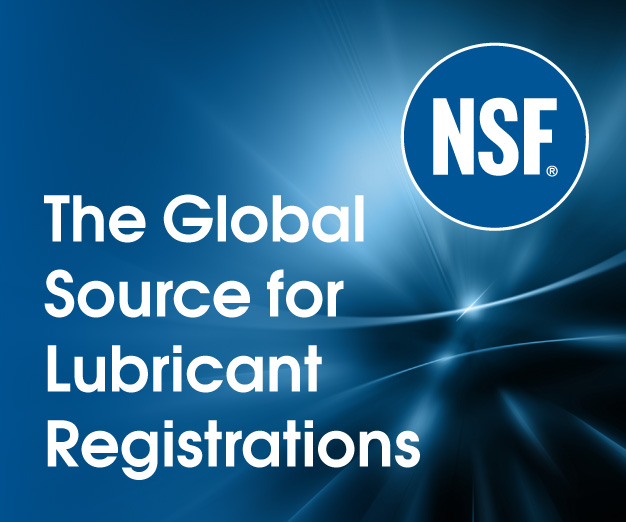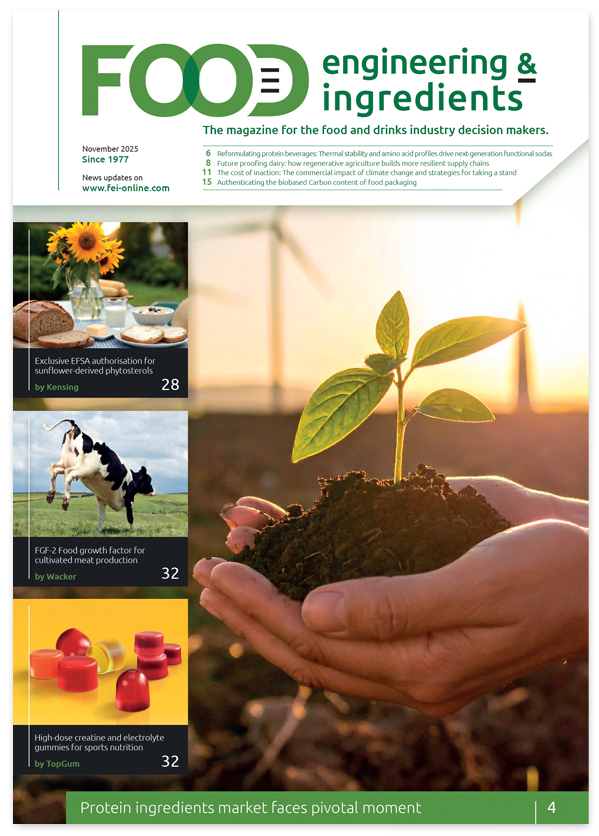Bolstering food safety through enhanced traceability, training, and regulation compliance
By Zoe Richards,
Business Solutions Director at Trustwell
With a fresh wave of transparency and compliance on the menu, food producers and distributors must get their kitchens in order. Preparing now is critical to smoothly navigating the regulatory road ahead, satisfying consumer and retailer calls for improved performance and openness in the supply chain.
Regulating the food system is complex as it involves numerous entities. Risks to consumers vary, including foodborne disease, allergic reactions, contaminations, the potential for food fraud, including misrepresentation or adulteration, and hazards linked to incorrect food labelling.
Let’s take a closer look at the most critical food safety aspects the food industry must consider to build a more resilient future and avoid regulatory pitfalls.
Maximising ROI through supply chain visibility and mapping
The uninterrupted flow of quality information among stakeholders across a company’s supply chain is essential for maintaining food safety and quality, complying with regulations, fostering company growth, and preserving brand integrity. However, the obstacle arises when inconsistent data sources affect reporting accuracy. Multiple, unrelated information pools almost inevitably lead to a muddled view of the company’s performance across these domains.
The advantages of possessing quality data are numerous. By utilising technology to store this information in a central repository, an organisation can get a clear, holistic view of its business operations and performance. The outcomes include data integrity, which provides a single source of truth; time and money savings; and clear supply chain visibility through an integrated system. This system permits everyone in the organisation to manage product quality proactively.
To prevent contaminated goods from reaching consumers, companies must prioritise strict quality control measures throughout their supply chain. This can include following Good Manufacturing Practice (GMP), establishing strict food safety and HACCP measures, or implementing an FSA food safety management plan. The “Food Information for Consumers” is the UK’s primary legislation governing food labelling.
Additionally, companies can leverage end-to-end traceability systems such as Trustwell’s connect platform to have more control over products as they progress along the supply chain. Using a system that can track products at the batch-lot level, companies can quickly and efficiently identify flagged products, detect potential incidents like spoiled food before reaching store shelves, and streamline their traceability procedures. This prevents the possible spread of foodborne illnesses to consumers.
Supply chain traceability software ultimately mitigates risks and recall costs, increases consumer confidence and operational efficiency, and maximises ROI.
Ensuring supplier-agreed product standards and performance requirements
Effective supplier selection is crucial for quality management in supply chains, with inadequate vetting and monitoring posing severe risks, ranging from delivery issues to customer-facing defects.
However, a robust qualification process identifies suppliers aligned with quality and continuous improvement. It also assesses operational risks such as financial instability, inadequate safety practices, or compliance failures, which can lead to costly supply chain disruptions if unmanaged. Transparency is key, promoting open dialogue and trust and ensuring mutually understood quality commitments.
Not only does proper supplier selection safeguard quality, but it also enhances cost efficiency by enabling strategic procurement. An example is FreshFoods Co, a food processing company that minimises costs by strategically evaluating suppliers on price, logistics, and product availability.
In times of crisis, a solid qualification process underpins supply chain resilience, allowing companies to adapt swiftly thanks to stable re-
lationships with diverse and reliable suppliers. By prioritising supplier qualification, companies can forge enduring partnerships, maintain consistent quality, reduce risk exposure, and realise cost savings.
However, a rigorous supplier qualification process isn’t just a tick-box exercise; it’s a strategic imperative for enduring success and growth in a competitive market.
Dynamic risk management in an increasingly complex market
To develop a dynamic risk management strategy, food companies must first identify their various data sources, including suppliers, regulators, and customers. Such data helps map the supply chain and serves as the foundation for developing robust risk assessment tools tailored to food safety and quality concerns.
A dynamic food safety risk assessment tool allows businesses to proactively identify potential hazards at each stage of the supply chain, enabling them to implement corrective actions swiftly. This tool must evolve with the developing risks and be informed by the latest data from every point of sourcing, processing, and distribution.
Similarly, managing quality challenges necessitates the creation of a dynamic quality risk assessment tool. Crucial to this process is recognising which ingredients are critical for business continuity, those that trigger the most consumer complaints, and the ingredient categories that represent the most significant financial expenditure. By ranking risks based on these factors, companies can optimally allocate resources and efforts to mitigate major threats efficiently and effectively.
Additionally, with the growing consumer interest in nutrition and product claims, all information provided to customers must be precise and consistent across all platforms. An organisation will be better positioned to mitigate risks, uphold quality, and foster consumer confidence by grounding its approach in detailed data analysis and dynamic assessments.
Allergens and accurate labelling to meet consumer demands
Clear ingredient statements and allergen declarations are essential because consumers, now more than ever, want to know what’s in their food. There are several ways to provide allergen information, depending on the type of food being produced and the most practical method for the business.
Due to the significant health risks involved, regulatory bodies set clear expectations for food companies regarding standardised Food Nutrition labels, ingredient statements, allergen declarations, and other packaging claims and product information.
One way to navigate exhaustive Food Labelling guides in various countries is through Trustwell’s food formulation and nutrition labelling software. The system is pre-built with the required government framework, which helps food companies ensure compliance when creating Nutrition Fact panels and ingredient statements.
When food producers enter a recipe into the software system, it will generate a Nutrition Facts label and automatically populate the ingredient list, ordering itself based on the weight of ingredients used in the recipe. The system will also appropriately adjust the font size. Users can toggle between parenthetical sub-ingredients or order everything according to weight. Additionally, they can customise the label by using alternate ingredient names and providing a bilingual translation. Importantly, allergens must be indicated on food labels using their common names.
Some governments also provide tools, for example, the UK’s Food Standards Agency offers a food labelling decision tool
www.food.gov.uk/allergen-ingredients-food-labelling-decision-tool to assist manufacturers and distributors with identifying the type of food they provide and the allergen labelling requirements. In the UK, there are 14 allergens to be declared as required by food law. These are celery, cereals containing gluten, crustaceans, eggs, fish, lupin, milk, molluscs, mustard, peanuts, sesame, soybeans, sulphur dioxide and sulphites, and tree nuts.
Developing safe products through extensive R&D
Launching a new food product can be complex and time-consuming, requiring extensive planning, research, and investment. Moreover, toggling between disparate software and systems can make getting a new product to market cumbersome and ineffective.
Digital platforms like Trustwell’s Connect Platform, our flagship SaaS offering, feature a streamlined interface that offers fast and intuitive product formulation and data entry. At the same time, they assist users with regulatory compliance by providing built-in data checks and alerts. Technology like this gives businesses a quick and easy way to increase safety and efficiency as they bring new products to market.
These labelling and formulation software advancements make it easy for food companies to create new product formulations almost instantly and make real-time updates to their existing recipes. It also automates the process of labelling calculations, ensuring that all nutritional information, ingredients, and allergens are correctly displayed on Food Nutrition labels.
Platforms like Trustwell Connect feature allergen alerts that prompt users to review all ingredient allergens before approving an ingredient to promote regulatory compliance and minimise the possibility of errors and omissions. Such a thorough process guarantees that allergen data is thoroughly reviewed before product launches, promoting consumer safety and regulatory compliance.
Building a safer future for food
The global food supply chain is becoming increasingly intricate. Fortunately, the technology to support more robust food safety and minimise the risk of contamination is readily available. Food industry professionals have the tools and resources to address most food safety risks.
The path forward will require businesses to invest in their internal tools and technologies and adopt new capabilities around data and analytics. By leveraging data and analytics at each stage of the supply chain, ranging from obtaining supplier data to gathering data from critical tracking events, they can acquire real-time insights into the safety and quality of food products.
Food producers must also establish more robust channels for collaboration and communication with suppliers, customers, peers, and stakeholders across the food supply chain. Such collaboration can help to close gaps across different systems. This ensures that in the event of a food safety issue, the right people are notified, aware of what actions to take, and able to act swiftly and appropriately.
A third consideration as leaders look ahead, is to prioritise food safety training and education for all food handlers along the supply chain. Proper training equips individuals with the knowledge and skills to handle food correctly, adhere to safety protocols, and respond effectively to potential hazards to ensure a safer and more secure food system.
About Trustwell
Trustwell is on a mission to change the food industry. Combining FoodLogiQ’s supply chain management software with Genesis’ nutritional analysis and label development solution, the Trustwell Connect platform creates the food industry’s only software platform connecting product development and regulatory-compliant labelling into supplier compliance, enhanced traceability, and automated recall management. From food and supplement manufacturers to retail grocers and restaurant chains, food companies around the world use Trustwell software as their trusted source for compliance and quality solutions in the food industry.





